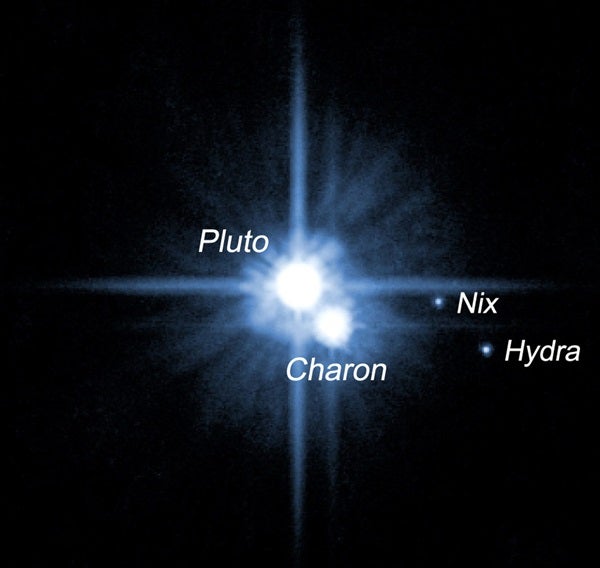Almost two years after the International Astronomical Union (IAU) General Assembly introduced the category of dwarf planets, the IAU, as promised, has decided on a name for transneptunian dwarf planets similar to Pluto. The name plutoid was proposed by the members of the IAU Committee on Small Body Nomenclature (CSBN), accepted by the Board of Division III, by the IAU Working Group for Planetary System Nomenclature (WGPSN) and approved by the IAU Executive Committee at its recent meeting in Oslo, Norway.
Plutoids are celestial bodies in orbit around the Sun at a distance greater than that of Neptune that have sufficient mass for their self-gravity to overcome rigid body forces so that they assume a hydrostatic equilibrium (near-spherical) shape, and that have not cleared the neighbourhood around their orbit. The two known and named plutoids are Pluto and Eris. It is expected that more plutoids will be named as science progresses and new discoveries are made.
The dwarf planet Ceres is not a plutoid as it is located in the asteroid belt between Mars and Jupiter. Current scientific knowledge lends credence to the belief that Ceres is the only object of its kind. Therefore, a separate category of Ceres-like dwarf planets will not be proposed at this time.
The IAU has been responsible for naming planetary bodies and their satellites since the early 1900s. The IAU CSBN, who originally proposed the term plutoid, is responsible for naming small bodies (except satellites of the major planets) in the Solar System. The CSBN will be working with the IAU WGPSN to determine the names of new plutoids to ensure that no dwarf planet shares the name of another small Solar System body. The WGPSN oversees the assignment of names to surface features on bodies in the Solar System. These two committees have previously worked together to accept the names of dwarf planet Eris and its satellite Dysnomia.
In Oslo, members of the IAU also discussed the timing involved with the naming of new plutoids. Again, following the advice of the Division III Board and the two Working Groups, it was decided that, for naming purposes, any Solar System body having (a) a semimajor axis greater than that of Neptune, and (b) an absolute magnitude brighter than H = +1 magnitude will be considered to be a plutoid, and be named by the WGPSN and the CSBN.
Name(s) proposed by the discovery team(s) will be given deference. If further investigations show that the object is not massive enough and does not qualify as a plutoid, it will keep its name but change category.










